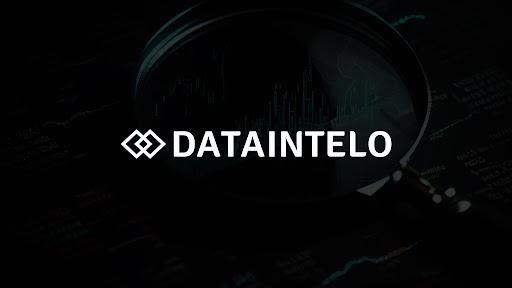The Online Grocery Market is experiencing significant momentum as evolving consumer habits, digital innovation, and the rising need for contactless services reshape global shopping behavior. From urban centers to rural communities, customers are embracing the convenience of ordering groceries online, spurring robust growth across platforms and supply chains.
With mobile apps, personalized shopping experiences, and improved last-mile delivery, online grocery shopping is no longer a niche—it’s a new norm. The market is undergoing a transformative shift, backed by increasing smartphone penetration, improved internet access, and the availability of diverse product categories.
According to Dataintelo’s latest research, this market is expected to see continued expansion, driven by a combination of technological advancements and evolving consumer preferences.
Key Drivers Boosting the Online Grocery Market
Several macro and microeconomic forces are propelling growth in the Online Grocery Market:
-
Rising E-commerce Adoption: More consumers are turning to digital platforms for everyday essentials, accelerated by convenience and time savings.
-
Urbanization and Lifestyle Changes: A fast-paced lifestyle, particularly in urban areas, is encouraging demand for fast, reliable grocery delivery.
-
Pandemic-Induced Behavior Shifts: COVID-19 permanently altered shopping habits, with more households adopting online grocery services.
These drivers have collectively fueled a dramatic rise in online orders, boosting platform traffic and market revenues.
Market Challenges and Restraints
Despite its rapid growth, the Online Grocery Market faces several key challenges that may impede its full potential:
-
Logistical Complexities: Delivering perishable goods in tight time windows poses supply chain challenges.
-
Operational Costs: Managing warehouse storage, cold chain logistics, and last-mile delivery can be expensive.
-
Limited Internet Access in Developing Regions: Infrastructure gaps continue to restrict market penetration in some areas.
Solving these issues through smart logistics, automation, and partnerships will be vital for long-term scalability.
>> Request a Sample Report: https://dataintelo.com/request-sample/83407
Emerging Opportunities in a Digitally Driven Economy
The evolving market landscape is creating numerous opportunities for innovation and investment:
-
AI-Powered Inventory and Recommendation Systems: Artificial intelligence enhances user experiences and optimizes supply chains.
-
Subscription and Membership Models: Loyalty-based features drive repeat business and offer stable revenue streams.
-
Integration with Voice Assistants and Smart Devices: Voice-activated shopping and IoT are reshaping how consumers interact with online grocery platforms.
These opportunities are helping retailers differentiate offerings while increasing operational efficiency and consumer satisfaction.
Market Outlook and Growth Projections
The global Online Grocery Market was valued at USD 298 billion in 2023 and is projected to reach USD 1.68 trillion by 2032, growing at a CAGR of 21.3% during the forecast period.
This significant growth trajectory is attributed to:
-
The expansion of online infrastructure in emerging markets
-
Increasing focus on digital transformation by traditional retailers
-
Rise in dual-income households seeking convenience
-
Demand for organic, specialty, and health-oriented products online
As digital ecosystems mature, the market is positioned to play a dominant role in future retail dynamics.
>> View Full Report: https://dataintelo.com/report/online-grocery-market
Regional Insights: Global Trends and Local Demand
-
North America: Leads the global market with high digital adoption and premium grocery delivery services.
-
Asia-Pacific: The fastest-growing region, driven by dense populations, smartphone usage, and expanding middle class.
-
Europe: Strong growth across Germany, France, and the UK due to increased consumer preference for online shopping.
-
Latin America and Middle East & Africa: Gaining momentum with investments in infrastructure and mobile commerce.
These regional trends underline the market’s broad appeal and adaptability to various economic environments.
Consumer Trends Shaping the Future
The market’s evolution is heavily influenced by consumer expectations and preferences:
-
Preference for Same-Day or Scheduled Delivery: Shoppers prioritize speed and reliability.
-
Interest in Sustainable and Local Produce: Ethical consumption drives demand for locally sourced, eco-friendly goods.
-
Digital Payment Integration: Seamless checkout experiences are vital for customer retention.
Keeping pace with these preferences will be essential for service providers aiming to secure long-term consumer loyalty.
>> Check Out the Report: https://dataintelo.com/checkout/83407
Technological Innovation at the Core
Advanced technologies are transforming every touchpoint of the online grocery experience:
-
Blockchain: Enhances transparency and traceability in food sourcing and delivery.
-
Big Data Analytics: Enables predictive stocking, customized recommendations, and demand forecasting.
-
Cloud and Edge Computing: Facilitates seamless order processing and real-time tracking.
-
Augmented Reality (AR): Offers virtual store tours and immersive product previews.
These innovations are improving user engagement, streamlining operations, and enabling real-time responsiveness to market changes.
Future Outlook: The Digital Grocery Cart of Tomorrow
Looking ahead, the Online Grocery Market is poised for deeper integration with smart home ecosystems and autonomous delivery technologies. Innovations such as drone delivery, robotic warehouses, and AI-driven customer service are not futuristic concepts—they’re becoming central pillars of competitive strategy.
Furthermore, as sustainability becomes a key differentiator, companies are investing in eco-packaging, carbon-neutral logistics, and waste reduction initiatives to align with environmentally conscious consumers.
Conclusion: A Revolution in Everyday Retail
The Online Grocery Market is no longer an optional convenience—it’s an essential service shaping the future of retail. Backed by technology, changing consumer behavior, and supportive infrastructure, it is set to transform how people shop for their daily needs.
As industry players continue to innovate and scale, the market will unlock new value propositions, reaching more consumers with faster, smarter, and more personalized grocery experiences. For businesses, investors, and technology providers, this represents a generational opportunity to be part of a high-growth digital ecosystem.

